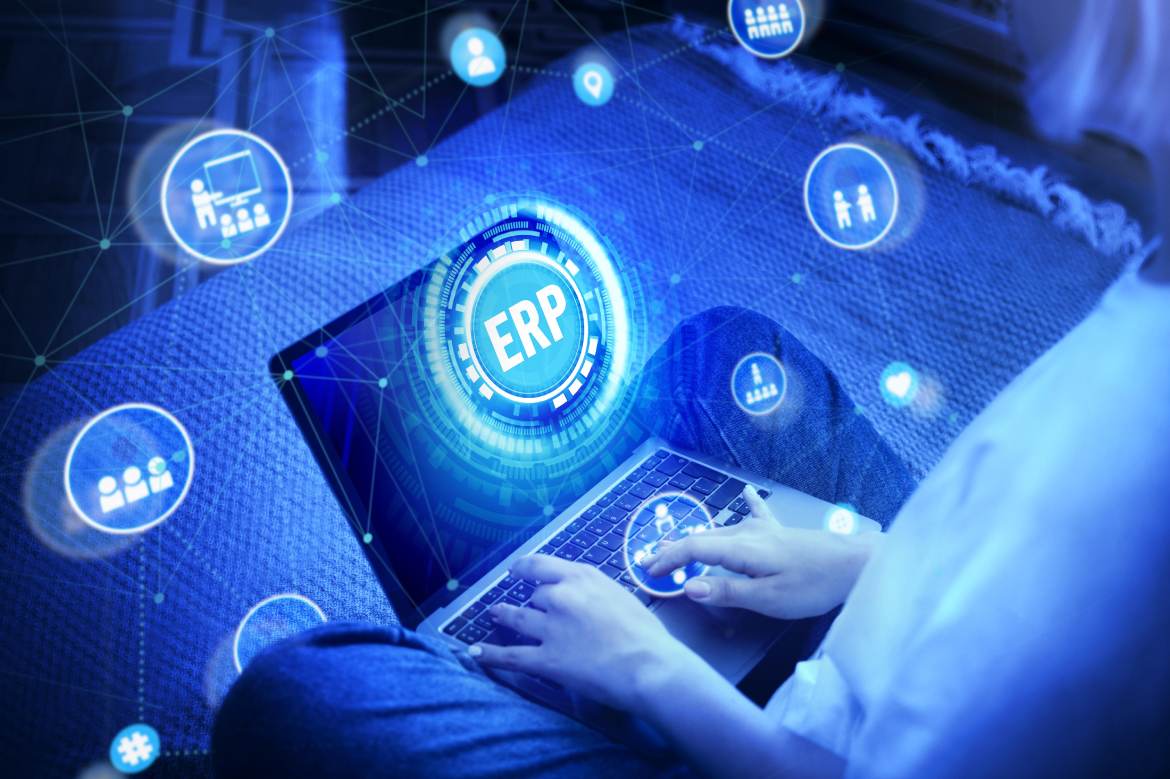New requirements, new markets, new locations – as a result, job requirements are becoming more and more individual, new positions have to be filled and employee skills have to be adapted to the digital transformation. Personnel management deals with all these topics. Since a successful company performance is often only made possible by the “resource” employees, this area of the company offers great potential.
With a human resources management tool, various human resource management processes can be structured, managed centrally and implemented efficiently and sustainably. With a suitable tool, routine work is shortened, process costs are reduced, billing processes are simplified and capacities are created. Depending on the application, information can be displayed transparently for both employers and employees and the derivation of goals and measures in accordance with corporate goals can be facilitated through networked and integrated processes.
ERP-supported personnel management offers optimization and automation possibilities on different levels. With a human resources management tool integrated into the company system, various processes can be efficiently designed:
Table of Contents
Organizational Management
The organizational structure can be realistically mapped, including all positions, their requirements and employees assigned to them. This results in the company and employee organizational chart in which the job requirements, such as necessary qualifications and further training or necessary foreign language skills are stored. Tasks, responsibilities and authority to issue instructions can also be recorded and managed at this point.
Employee Recruitment
With the help of an integrated process, job planning and notification of personnel requirements, the processing of applications, interviews and applicant tests up to the point of hiring can be carried out with the company software. In addition, costs arising from the application process can be stored and the associated job advertisements can be managed.
Incoming applications can be recorded in the applicant database and, for example, competencies can be compared with the requirements of a specific position. An applicant database can record classic (mandatory) information and contact options as well as other information that can be seen from the application documents, such as the degree of training and qualifications. Application documents can also be electronically attached to the digital personnel file and linked to web-based applicant management.
The further application process including the invitation, implementation and evaluation of the job interviews up to the signing of the contract can be consistently organized and controlled in a personnel management solution.
Digital HR Administration And Payroll Accounting
With the right transactions, personnel data can be managed efficiently, employment data can be recorded seamlessly and the administrative burden on HRM can be reduced. This includes company affiliations, working time models, cost centers, absences, etc. Individual CVs and professional qualifications, achievements, knowledge, further training, etc. can also be recorded. This can be used, for example, to fill vacancies with the right person – even across locations.
In the area of payroll accounting, tools are available for including daily work data and days off recorded in the vacation application in the payroll. In addition, processes such as payroll accounting can be carried out in accordance with current laws, types of social security and tax laws. Travel expenses can also be booked directly or instalment debts and advances can be recorded in the system so that they are automatically taken into account in payroll accounting.
Performance Management
Data about employees recorded in personnel management can be suitable for managing and promoting them in a targeted manner. For example, it is possible to show which characteristics and knowledge of the employees particularly correspond to the company goals and where these can be best used. Special potential can also be identified and promoted at an early stage.
Performance and assessments can be collected and structured with the help of the tool. The personal career planning of the employee can also be taken into account. All available information can then be included by the personnel manager in order to achieve the most objective possible evaluation of the employees. Performance management thus ensures that personnel development is geared towards corporate goals, while at the same time taking personal employee wishes and potential into account.
Human Resource Development
In order to remain up to date with regard to changing market developments, it is essential to maintain and expand the know-how of the employees in accordance with current developments. The area of personnel development should therefore also be an essential part of an integrated company software.
In training management, training courses can be planned and resources can be procured and suitable participants and their performance can be determined. In addition to evaluating the training carried out, it is also possible to check the participants’ performance goals.
In this way, the employees can be supported individually in their development, the quality of work can be improved and an increase in added value can be brought about.
Self-Service Devices
In order to contain administrative activities, there are tools with which employees and supervisors can independently and digitally record certain processes. A significant increase in efficiency can be achieved, for example, with so-called self-service devices in personnel management. Certain permissions can be granted to collect data. Processes are thus made more efficient and sustainable.
It is thus possible for self-service transactions to use personal data, pay slips, holidays, instalment debts, advances, overtime, and display performance results, and these can be viewed by the employee himself.
analyzes And Reports
An integrated personnel management tool allows analyzes and reports to be prepared and linked to other data. In this way, processes can be easily managed with the help of report design and report applications and provide the data basis for optimal personnel control. The reports can be adjusted according to the requirements.
It is therefore evident that in the area of personnel management, where the right employees as a “resource” sometimes seem scarce due to demographic and structural change, there can be a lot of potential to achieve set corporate goals. Satisfied, motivated and qualified staff should be kept in the company for as long as possible – HR management modules integrated into the ERP system can be a key here. With a comprehensive solution, the necessary processes can be optimized and integrated with other company data.
Also Read: Importance Of Visual Communication For A Business




